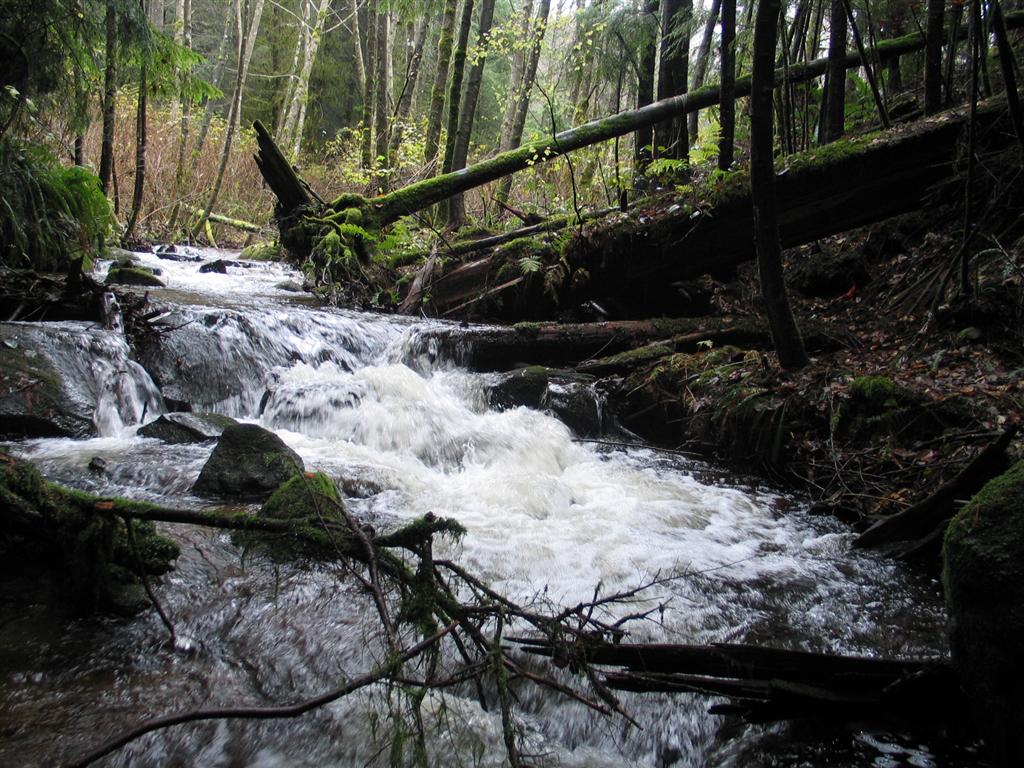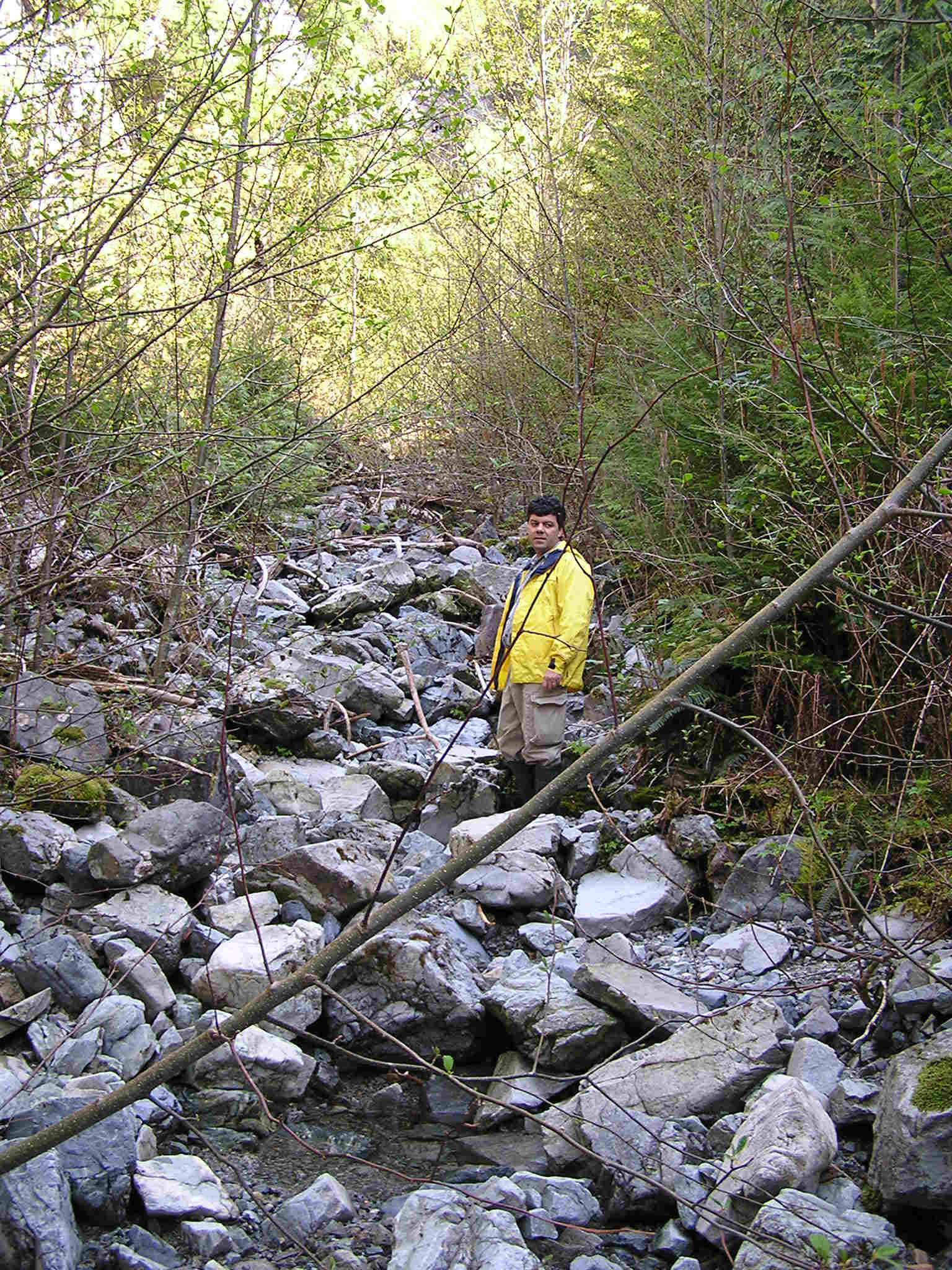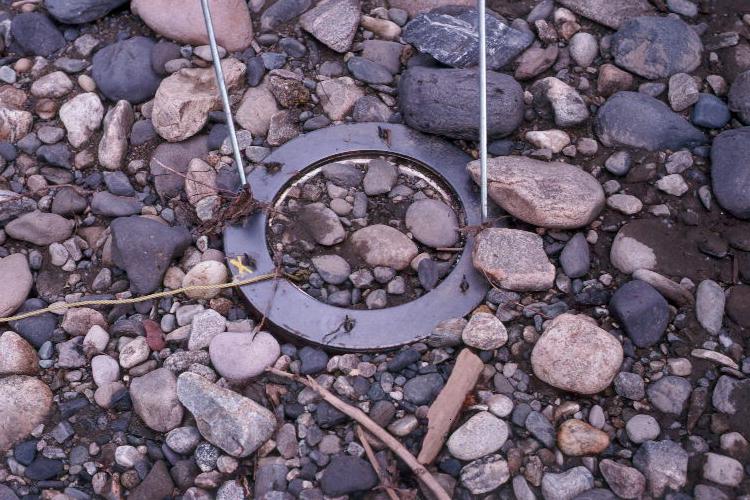 These complementary and interwined themes are directly relevant to both riverine ecosystems and to human development in fluvial environments. Ecological processes in rivers are in dynamic balance with fluvial processes; species dominate and are then replaced as a function of the stresses imposed upon them by the processes acting in their physical environment. Changes in the frequency of bed entrainment and rate of sediment transport can thus have dramatic effects on biotic diversity and on riverine ecosystems as a whole. Ecosystems are influenced by inputs of organic material that are related to bank erosion and the transport of organic material from areas upstream, and are intimately linked with the process of sediment transport and deposition, which vary as channel stability and bed material transport regimes change.All of these processes are further affected by human activities, such as urbanization, road construction, agricultural development, forest harvesting and direct manipulation of stream courses. Human developments in fluvial environments are at risk from fluvial processes. Bridges and other in-stream structures may be damaged or washed out, if the dynamics of bed material entrainment and transport are not sufficiently understood—as they often are not. Reservoirs and irrigation canals may aggrade and thus be rendered useless within their design lifetime if sediment supply and transport rates are not sufficiently well resolved. Development outside of the channel can also be affected, if the river jumps its banks and changes course, or if it aggrades and floods more frequently.
These complementary and interwined themes are directly relevant to both riverine ecosystems and to human development in fluvial environments. Ecological processes in rivers are in dynamic balance with fluvial processes; species dominate and are then replaced as a function of the stresses imposed upon them by the processes acting in their physical environment. Changes in the frequency of bed entrainment and rate of sediment transport can thus have dramatic effects on biotic diversity and on riverine ecosystems as a whole. Ecosystems are influenced by inputs of organic material that are related to bank erosion and the transport of organic material from areas upstream, and are intimately linked with the process of sediment transport and deposition, which vary as channel stability and bed material transport regimes change.All of these processes are further affected by human activities, such as urbanization, road construction, agricultural development, forest harvesting and direct manipulation of stream courses. Human developments in fluvial environments are at risk from fluvial processes. Bridges and other in-stream structures may be damaged or washed out, if the dynamics of bed material entrainment and transport are not sufficiently understood—as they often are not. Reservoirs and irrigation canals may aggrade and thus be rendered useless within their design lifetime if sediment supply and transport rates are not sufficiently well resolved. Development outside of the channel can also be affected, if the river jumps its banks and changes course, or if it aggrades and floods more frequently.
Current Projects

 My current research has evolved towards small forested streams; the research focuses on the routing of water and sediment, and on associated channel characteristics in forested stream. To date I have investigated a wide range of topics in geomorphology and hydrology, and I have worked at experimental sites representing flow regimes ranging from
My current research has evolved towards small forested streams; the research focuses on the routing of water and sediment, and on associated channel characteristics in forested stream. To date I have investigated a wide range of topics in geomorphology and hydrology, and I have worked at experimental sites representing flow regimes ranging from  arid land flashfloods (Botswana and Israel) to snowmelt events (Canada and Germany). Throughout, I have sought to understand channel stability and bed material movement in both coarse and fine texture bed rivers. These complementary and intertwined themes are directly relevant to both riverine ecosystems and to human development in fluvial environments in British Columbia. Below is a summary list of my current research projects.
arid land flashfloods (Botswana and Israel) to snowmelt events (Canada and Germany). Throughout, I have sought to understand channel stability and bed material movement in both coarse and fine texture bed rivers. These complementary and intertwined themes are directly relevant to both riverine ecosystems and to human development in fluvial environments in British Columbia. Below is a summary list of my current research projects.
- Channel dynamics in steep mountain streams: Sediment transport, channel stability and channel morphology (Field and physical model).
- Factors controlling the vertical distribution and infiltration of fine particles in small stream (physical model).
- Wood Budget and Sediment Budget approach for Evaluating Effects of Various Riparian management Strategies (Field).
- Hydrological Indicators for Watershed Sensitivity to Peak Flow Changes in Small Watersheds (Field).
- Land use and sediment yield (Yellow River, China, field and GIS).
- Salmon bioturbation and stream processes (Field)
- Modelling fish distributions in small streams of the Canadian Rocky Mountain Foothill.
- Hydrograph shape and virtual travel velocity of uniform sediment (Physical model).